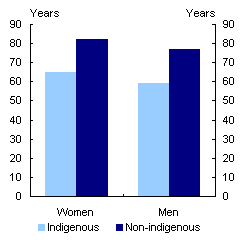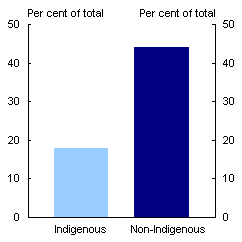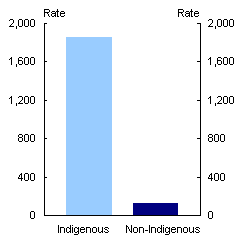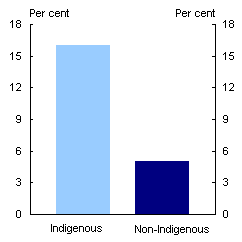Address to the 2006 Economic and Social Outlook Conference, Melbourne, 2November
Ken Henry
In the past decade and a half Australia’s performance has improved dramatically, with GDP perperson growing faster, on average, than in the OECD. Managing this level of prosperity requires avoiding inappropriate responses to developments such as the information and communications technology revolution, population ageing and the re-emergence of China and India. We also need to address long standing policy failures such as the inappropriate pricing of natural resources and the deprivation suffered by most indigenous Australians.
Introduction
In the mid-1980’s The Economist magazine summed up Australia in the following terms: ‘… if you look at history, Australia is one of the best managers of adversity the world has seen — and the worst manager of prosperity.’
This rather pithy one-liner was revived by Don Stammer in 2002. Don and others have since concluded that the statement is no longer true. Of course, challenges remain. But things have changed. Due to much improved macroeconomic and structural policy frameworks, we have enjoyed the longest period of low-inflation growth in our economic history and, importantly, we have so far managed to avoid the policy errors committed in earlier episodes of prosperity. That optimistic thesis is now firmly established and is reflected in economic surveys by the OECD and the IMF.
Chart 1 illustrates the essence of the story. It shows the gap between Australian and OECD average levels of real GDP per capita — the most frequently used measure of average living standards.
Chart 1: Australia’s economic revival
The difference between Australian and OECD average GDP per person
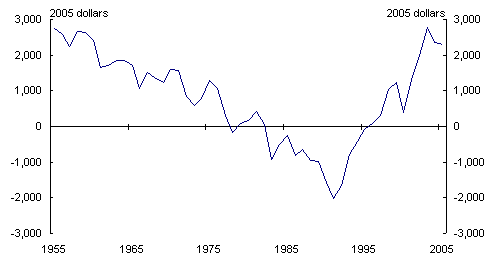
OECD includes only the 24 longest standing member countries.
Source: Groningen Growth and Development Centre and The Conference Board, Total Economy Database, September 2006, http://www.ggdc.net.
In the four decades from 1950, our relative performance deteriorated in trend terms. But in the past decade and a half Australia’s performance has improved dramatically. GDP per person has grown faster, on average, than the OECD, raising Australia’s GDP per person from the bottom third of OECD countries in the early 1990s to the top third today. On this measure, the standard of living in Australia now surpasses all G7countries except the United States. That is our recent history, but it is not the end of the story.
Clearly, the history is only partial, since real GDP per capita in a year doesn’t measure everything that is relevant to the wellbeing of Australians.
And what of the future? Past success doesn’t mean that we will always manage prosperity well. If we are to do so, we will have to avoid policy error.
The risk of policy error has two principal sources: First, inappropriate responses to a set of largely exogenous structural shocks of medium- to long-term duration arising from the continuing information and communications technology revolution, population ageing and the re-emergence of China and India; and second, failure to appreciate the implications of past policy success for future policy discipline.
Even if we can avoid policy error, we won’t be able to say that we have managed prosperity well unless we have also taken the opportunity to correct for past mistakes— for doing better in areas of chronic policy failure, some stretching back over generations. There are three systemic challenges to policy reform in these areas. First, addressing many of the more obvious areas of policy failure will demand more from our federated system of governance than it has previously proved capable of delivering. The fragmented, uncommercial arrangements for the supply of water and energy illustrate both the problem and the reform challenge. Second, some of the problem areas might demand solutions that are simply too confronting to command wide-spread community support. The severe capability deprivation suffered by most indigenous Australians illustrates this challenge. And third, some of the more egregious instances of policy failure are rarely, if ever, seen in those terms — that is, we have a recognition problem. This challenge is illustrated by the failure of governments, stretching back to colonial times, to insist on the appropriate pricing of access to natural resources like water, timber and fish stocks; and by widespread environmental degradation, including a history of habitat destruction and species extermination. I don’t have time tonight to do justice to the issues raised in this third category, but I will have something to say about the other two.
The risk of policy error
As a consequence of past policy success — due overwhelmingly to a couple of decades of structural reform and the implementation of credible, transparent anchors for macroeconomic policy — the Australian economy is operating flexibly, at a level close to full capacity utilisation.
A high rate of capacity utilisation is not simply a consequence of the terms-of-trade boom, though the sharply higher terms-of-trade has boosted national income, and tax revenues, considerably. It would be dangerous to base economic decisions, including fiscal policy decisions, on those terms-of-trade being sustained. And the drought provides further reason for being cautious about the longevity of these ‘boom’ times.
There are two further reasons for caution: having closed much of the excess capacity gap, we should expect to see slower trend growth in real GDP; and, as is reasonably well understood these days, following the release of the 2002 Intergenerational Report, population ageing will reduce the rate of growth of our productive capacity.
All of this provides a strong case for a policy focus on measures — in the domains of population, participation and productivity — that expand the economy’s supply potential. That there should be such a policy focus seems reasonably well accepted.
Less well understood is the even more important point that, in an economy experiencing more or less full capacity utilisation, all activity, including of governments, that commands additional real resources without at the same time expanding supply capacity must impose a cost on somebody.
Thus, almost every day I hear somebody arguing that some activity should be accorded a special taxpayer-funded hand-out, either because it will ‘create’ some impressive number of new jobs or because, if it doesn’t receive taxpayer-funded support, an equally impressive number of jobs will be ‘destroyed’. These arguments must be based on a view that the economy is in a state of chronic under-utilisation of labour and that the central task of government is to provide taxpayer-funded subsidies to those who have sufficient wit to find ways of employing people.
Well, that view is at odds with what we observe in the Australian economy of today, where policy settings have achieved a period of sustained success and, as a consequence, labour is in scarce supply. It is because of the intensity of competition for scarce labour that we hear so much about ‘skill shortages’ these days.
There are three important consequences of a near full employment economy that are worth emphasising. First, provided growing businesses are not being subsidised in any way, we can be confident that any consequent reallocation of labour in their favour increases GDP. On the other hand, if g
rowing businesses are being subsidised, or if governments step in to prevent other businesses from shrinking, then GDP is lowered by their command of the nation’s scarce labour. Second, government activity that doesn’t expand supply capacity necessarily crowds out private sector activity. This crowding out represents the opportunity cost of the government’s having command of some part of the nation’s scarce resources, including labour. And third, any attempt to inhibit an allocation of the economy’s factors of production consistent with its terms-of-trade must have adverse implications for GDP.
So what would ‘job creation’ mean in an economy close to full employment? I would highlight three cases.
First, it seems fair enough to say that Australian businesses create jobs when they develop employment programmes for older workers who would otherwise take ‘early retirement’. Second, it seems fair enough to say that a business would create a job if it were to employ any one of the 710,000 people on the Disability Support Pension. And third, it is surely fair enough to say that businesses like Argyle Diamond Mines create jobs when they develop employment opportunities for indigenous Australians who would otherwise face a life of passive welfare dependency.
Common to these three cases is that the employment opportunity is matched with someone who would otherwise not be in the labour force. Jobs are ‘created’ in these cases because the employment opportunity also lifts the rate of labour force participation.
In addition to these three notable areas, useful job creation strategies include early childhood initiatives to improve the prospects of healthy mental and social development, and preventative health initiatives to reduce the incidence of chronic medical conditions that prevent active engagement in the labour force — and in life more generally.
Not only do we appear now to be living in something approximating a full-employment economy, it is an economy going through quite significant structural change as a result both of the ICT revolution and the terms-of-trade impact of the re-emergence of China and India. There is a risk of costly policy resistance to the structural changes implied by these external shocks.
The ICT revolution is changing the whole configuration of the production chain in the tradeables sector of industrialised economies and, with the effect of earlier global tariff reductions and falls in transport costs also working in the same direction, delivering a much greater integration of our manufacturing sector into global production chains. And it is shifting the boundary between what is tradeable and what is non-tradeable. Some services traditionally regarded as non-tradeable — in particular, those not requiring the physical presence of the service-provider — are fast becoming globalised.
It is pretty well accepted these days that Australia’s economic interests have been well served by trade liberalisation and globalisation. And yet, even in this country, the accelerating liberalisation of trade in services has attracted the pejorative label of ‘off-shoring’, with India usually identified as the winner and the industrialised world, Australia included, as the loser.
‘Off-shoring’ used to be called importing. And that is what it is: importing services. It is true that India gains from being able, because of ICT developments, to export services to the industrialised world. The ICT revolution, initiated in Silicon Valley, and considered by many to have given America ‘new economy’ status in the 1990s, turns out to be a precious gift to the people of India. But the industrialised world, Australia included, also has much to gain from ‘off-shoring’ — most obviously through a lowering of costs to business and, ultimately, consumers.
Opposition to ‘off-shoring’ is based on the same protectionist nostrums that were once used to support the high tariff wall that a generation of Australian policy makers has been busy dismantling. It may be dressed in different garb, but it is no more respectable.
The re-emergence of China and India has given us our highest terms-of-trade for 30years. The last time we had a terms-of-trade boom of this magnitude the economic consequences were not attractive. On this occasion, thus far at least, things have gone pretty well.
A much improved policy framework has made the economy more stable and resilient to external shocks. As a consequence, the profound adjustments that the economy is undergoing in response to the terms-of-trade boom have been remarkably smooth, at a macroeconomic level, compared with past experience. The external stimulus to the minerals sector has not translated into the sort of generalised inflation shock we saw in the 1970s because we have greater relative wage flexibility, the exchange rate has appreciated, product and factor market outcomes have remained quite competitive, macro policy has remained credibly anchored, and as a consequence inflation expectations are also relatively well anchored.
But the same structural flexibility that has underwritten such benign macroeconomic outcomes is facilitating a reallocation of real resources in favour of mining, construction and those parts of the manufacturing sector that provide inputs to those industries. Some are finding this structural adjustment hard to accept. In that resistance to change, there is a risk of a lapse into old thinking — evident more generally in rising protectionist sentiment in a world where there is a crisis of global governance and declining international cooperation.
Making the most of opportunity
The Council of Australian Governments (COAG) has accepted that there is a strong case for addressing long standing policy failures in pricing, competition and competitive neutrality that have prevented the development of national markets in water, energy and other areas of economic infrastructure.
The COAG goals are ambitious and well targeted. But COAG agreements are not the same thing as reform outcomes. To date, progress against commitments has been slow.
The COAG agreements are a product of cooperative federalism. Advocates of cooperative federalism — more numerous among the states than in the Commonwealth, of course — should have a strong interest in the implementation of the COAG agreements since that experience is writing a judgement on the quality of our federal arrangements, and on the strength of the cooperative federalism model. So far, the judgement is not particularly favourable.
Even so, the inadequacy of present market arrangements for water and energy is so apparent today that we can be confident of these areas occupying a position in the mainstream of policy development for some time.
Other instances of policy stress are not nearly so noticeable — or, at least, are less often noticed. Far from the mainstream, indigenous disadvantage is a dull glow on the periphery, capturing our attention only fleetingly, usually when presented to us as salacious. Most Australians know there is something wrong because they see images of substance abuse and domestic violence in indigenous communities. But that is about all they see. And it might be all they want to see; for the most part preferring the mental image of the indigenous community as a sheltered workshop for the permanently handicapped.
Well, indigenous communities are not sheltered workshops. They are a constituent component of mainstream Australia. But it has to be said that the life experience in that part of the mainstream is rather unusual — as Chart 2 illustrates.
|
Chart 2: Indicators of indigenous disadvantage |
|
|
Life expectancy |
Adults with year 12 qualification |
|
|
|
|
Imprisonment rate per 100,000 people |
Unemployment rate |
|
|
|
Indigenous Australians have a dramatically lower life expectancy — 17 years less than the Australian average, dramatically lower rates of year 12 completion, substantially higher unemployment rates and substantially higher rates of imprisonment.
Indigenous disadvantage diminishes all of Australia, not only the dysfunctional and disintegrating communities in which it is most apparent. Its persistence has not been for want of policy action. Yet it has to be admitted that decades of policy action have failed.
The good news is that there is a growing level of support — significantly, including among indigenous community leaders — for innovative approaches. Many of these new approaches are being targeted to local circumstances, with high rates of indigenous participation in design and implementation. Some of the indigenous development initiatives being undertaken by mining ventures in the West and the North are producing impressive results. And the work undertaken at the Cape York Institute under Noel Pearson’s leadership, which has led to the development of several pilot projects that take a fresh approach to welfare and service delivery, is equally impressive. There is reason for hope.
Noel’s development goal for the Cape York communities, grounded in the work of Nobel Laureate Amartya Sen, is that indigenous people have the capability to choose lives that they have reason to value. There is a vast chasm separating most indigenous Australians from this goal. Yet it is precisely the goal to which all Australians should commit.
Incidentally, I was struck, during a visit to one of the Cape York communities last year, that the principal concern of its leaders was the red tape burden of reporting and compliance arrangements arising from a multiplicity of government intervention programmes and delivery agencies. Compliance with red tape was absorbing all of the administrative capacity of the community. Reducing the red tape burden on indigenous communities must be a national reform priority.
Concluding remarks
To date, we have responded well to the challenges of the ICT revolution, population ageing, the re-emergence of China and India and the discipline of a full capacity economy. It is no longer true that we are the ‘worst manager of prosperity’. Yet the risks of policy error are considerable. In our present economic circumstances, the premium on high quality policy decisions is unusually high.
In addressing the consequences of a long history of policy failure that has denied us effective national markets in things as important as energy and water, and has produced appalling levels of environmental degradation and indigenous disadvantage, we have to do better — much better if we are to be able to make any credible claim to future generations of Australians that we managed prosperity well.
A few weeks ago I was invited to visit my old high school on the mid north coast of NSW where I spent 6 years in the early 1970s, completing Year 12 in 1975. In the three decades since I hadn’t been back. The school has changed enormously, of course. Today’s student population of 850 is about 15 per cent smaller than in my day. And it has changed in other, quite profound, ways. The indigenous student population in my day was about three-tenths of 1 per cent. Today, it numbers 17 per cent. One happy consequence is that the graffiti that adorned the walls of the four brick buildings in my student years has been replaced by spectacular murals of stunning indigenous artwork. The couple of dozen demountable class rooms of my day — freezing in winter and roasting in summer — have been replaced by an additional five modern air conditioned brick buildings, networked with state-of-the-art IT infrastructure. At the centre of the school, cleverly located to achieve effortless integration with the general body of students, is an impressive purpose-built facility for students with special needs. The students I spoke to were bright, energetic and happy. The teachers appeared enthusiastic and dedicated to their students. Teachers and students alike were obviously very proud of their school. I was impressed.
And yet, I came away from the school with a sense of unease. Other things had changed at the school as well. And some of these changes were not so impressive. Given the substantial increase in year 12 retention rates over the past 30 years, Iprobably shouldn’t have been surprised to learn that, today, less than half the students in years 11 and 12 study mathematics. Even so, I was disappointed. I was surprised to learn that in many years it is impossible to put even one physics class together. And I was shocked to learn that the school no longer offers economics; not at all. At my old school, economics is dead. Maths, physics and economics are simply too hard. One of the teachers — who had turned his back on the study of medicine at Sydney University to devote his life to the teaching of economics — told me that these outcomes really shouldn’t surprise anybody. The set of incentives confronting teachers and students should not be expected to produce anything else. Today, many students are happy studying what this teacher and I, as students ourselves, would have regarded as soft options. Anyway, the soft options pay better. And teachers don’t get rewarded for having students achieving ordinary grades in tough subjects.
There is a temptation to think that we can indulge ourselves in consuming the fruits of this economic boom; that this lucky country of ours can afford the luxury of the soft option.
But in that temptation lurks an intergenerational tragedy: if we succumb to the temptation we will avoid its costs, but we will impose an unnecessary burden on our children and grandchildren — indeed, on all future generations of Australians. Is that to be the legacy of this period of prosperity?
Australia’s recent economic success is not the consequence of soft options. That path leads back to the economic outcomes of the 1970s. Like the study of maths, physics and economics, policy discipline is hard. But it is not too hard. Like those subjects, it is precisely as hard as it needs to be.
